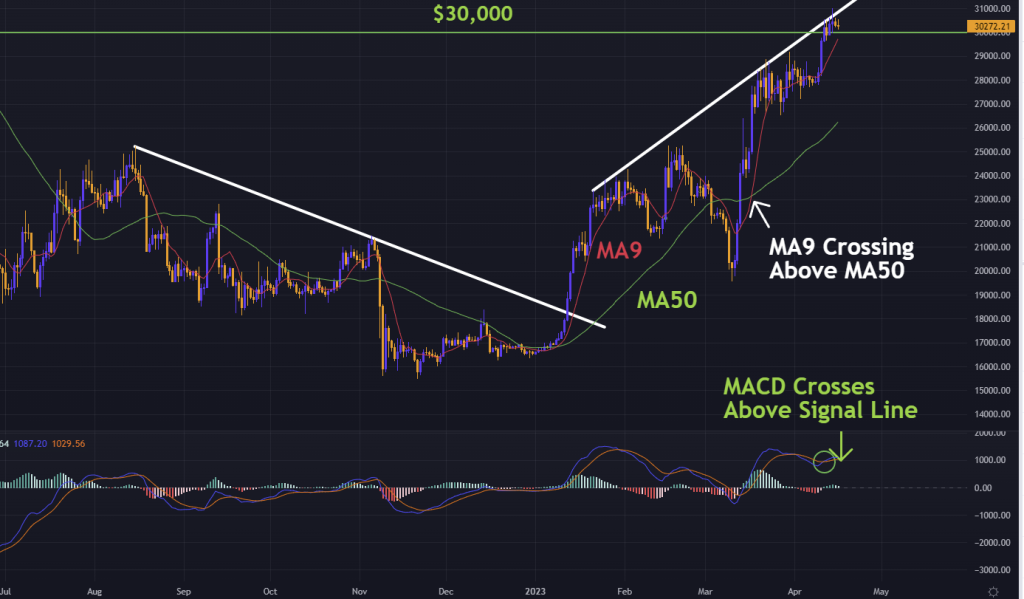
Last week the market received the news that inflation figures came in cooler than expected. Core CPI data was in line with predictions at 5.6%, higher than the previous reading of 5.5%. However, headline CPI came in at 5%, lower than the expected 5.1%. As such, risk assets began to rally. Due to the Fed’s data dependency, one would expect that these figures would significantly increase the likelihood of the Fed pausing rate hikes in May. However, the Fed has previously warned against taking its foot off the proverbial gas too soon. FOMC minutes soon followed the CPI figures at 6 p.m. UTC and confirmed this as all members backed a proposed 25bps hike in May. Some analysts think that the Fed will now be one and done in May. Core inflation will soon be trending at 3.5% annualised, and with a 5% Federal Fundfunds rate, the market is looking at a 1.5% real Federal Funds rate. In the past, a real rate of 1.5% has proven to be restrictive enough to kill inflation and the economy with it. This slowing of the economy is backed up by the Fed, who stated in the FOMC that they expect a mild recession starting in 2023. However, their use of the word mild has come under scrutiny, considering the yield curve is currently the most inverted as it has been since the 1980s.
In recent months, Crypto as an asset class has not been closely correlated with other macro markets and it also had its own event risk following the release of Ethereum’s Shapella upgrade last week. This upgrade completed the transition from Proof-of-Work (PoW) to Proof-of-Stake (PoS) and allowed users to withdraw their staked ETH and associated rewards. Many hypothesised that this would create selling pressure on Ethereum as those at the front of the queue to withdraw would sell spot, while those further back would hedge via perps and futures. Ethereum saw bearish price action in anticipation of this event, as ETH underperformed BTC in recent weeks. However, the actual reaction to the event was quite the opposite, as Ethereum has gained about 13% on Bitcoin from the Wednesday lows.
From a technical perspective, the bullish momentum from MA9 crossing above MA50 on the daily timeframe played out as Bitcoin finally rallied past $30,000. The bulls will now hope for this rally to continue up towards the next key resistance around $32,000. A key indicator that supports this scenario is that MACD recently crossed over its signal line. The last time this happened, Bitcoin rallied upwards of 42%. Market sentiment is mainly bullish at the moment. When this is the case, it’s important not to be blind-sighted, considering there has not been a major correction since mid-March; a pullback could most certainly also be on the cards.
Going forwards, the FOMC meeting on the 2nd and 3rd of May will have a bearing on short-term market direction. The impact on macro markets will likely not be as significant as the standard rate announcement from the Fed, considering the market is now well aware that another 25bps hike is on the cards.